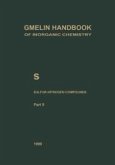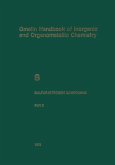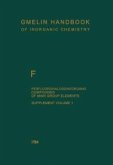The present volume contains all compounds in which at least one indium-carbon bonding interaction can be assumed. The compilation starts with the simplest compound of trivalent indium, In(CHh, and ends with studies about the interaction of indium with carbon monoxide 3 in an argon matrix. Literature coverage is intended to be complete to spring 1991 with various examples up to September 1991. The arrangement is closely related to that of the organogallium volume and documents the similarities between the two elements. Following the indium triorganyls and their adducts with Lewis bases in Section 1, the broad field of compounds of the general type R ln- n 3 n (n = 1, 2) is treated in sections 2 to 9; X represents a ligand bonded with a non-carbon atom to the indium atom. The arrangement of the various ligands follows the order group 17, 16, 15, etc. elements, with few compounds having direct indium-transition metal bonds. Ionic species, predominantly [R lnX -n]-compounds (n = 1 to 4), close the series of trivalent n 4 organoindium compounds and are collected in Section 11. Compounds of formally low valent indium (In", Ini, and Ino), with one R 1nlnR species having an In-In bond, form Section 12; 2 2 an extended chapter therein is dedicated to the young area of Cp*ln compounds in which i formalln is coordinated in an T] 5 manner.
Dieser Download kann aus rechtlichen Gründen nur mit Rechnungsadresse in A, B, BG, CY, CZ, D, DK, EW, E, FIN, F, GR, HR, H, IRL, I, LT, L, LR, M, NL, PL, P, R, S, SLO, SK ausgeliefert werden.









